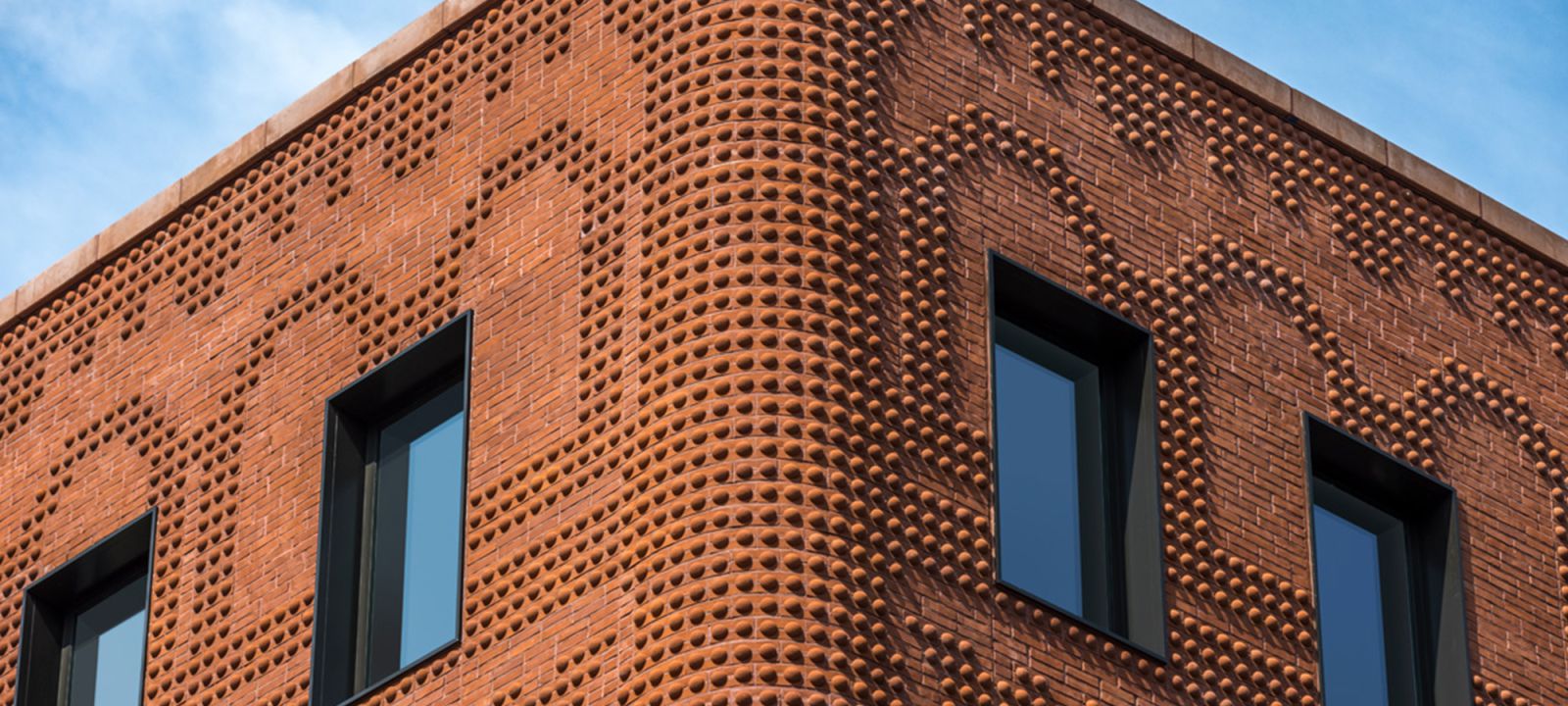Case Studies and Testing

This compilation of case studies provides valuable information concerning community-wide benefits and local governments' impetus behind adopting standards that recommend or mandate clay brick and masonry.
The case studies also explain the challenges and community support that was experienced when implementing the standards.
Brick Fire Testing:
About The Hollow Brick Fire Testing:
A new, “hollow brick” product was tested along with vinyl siding and fiber cement in typically constructed exterior wall sections. Each material was subjected to fire for one hour or until one of the failure criteria was met (wall collapses, flame or hot gas penetrates the wall, or when the temperature rises to 250°F or greater on the unexposed (interior) side of the wall.) The Results: No one was surprised when vinyl failed in under 20 minutes. Surprisingly, fiber cement couldn’t attain one hour. Needless to say, the brick passed easily. Background: BIA conducted fire tests in 2009 at the Southwest Research Institute in San Antonio in accordance with ASTM E 119, the Standard Test Method for Fire Tests of Building Construction and Materials.
About The Thin Brick Fire Testing:
In late 2018, BIA conducted fire tests at the Intertek Building & Construction facility in York, Pennsylvania in accordance with ASTM E119, Test Methods for Fire Tests of Building Construction and Materials, and NFPA 285, Test Method for Evaluation of Fire Propagation Characteristics of Exterior Non-Loadbearing Wall Assemblies Containing Combustible Components.
The specific wall assembly tested utilized thin brick veneer adhered to cement board with a thin layer of polymer modified mortar (thin set). Behind the cement board, a drainage mat, extruded polystyrene foam insulation, and a fluid-applied water-resistive and air barrier were installed, with the entire system fastened to cold-formed steel framing. Gypsum board was attached on each side of the steel framing and fiberglass batt insulation was installed between the studs.
The Results: The tests demonstrated that the thin set thin brick veneer wall assembly provides a one-hour fire resistance rating on both the exterior and interior sides of the wall and meets code-mandated limits on fire propagation to combustible components within the wall.
In addition, based on the post-test inspection results, below you will find the Engineering Analysis Report written by Jensen Hughes, a qualified, recognized fire safety engineering consultant. The report lists and justifies alternate materials which are permitted to be substituted for specific components within the tested wall assembly. The report also justifies that a thick set thin brick veneer wall assembly will provide the same or better fire resistance and flame spread propagation performance as the wall system tested at Intertek in accordance with ASTM E119 and NFPA 285 respectively. The above reports are often cited by local building code officials as substantiation for the use of thin brick wall assemblies in buildings to provide the appropriate level of fire resistance and to limit fire propagation.
Exterior Exposure - BIA Thin Brick Fire Test Summary Report
Interior Exposure - BIA Thin Brick Fire Test Summary Report
BIA Thin Brick Fire Test Summary Report
National Brick Research Center
BIA is proud to partner with The National Brick Research Center (NBRC) to conduct testing and research. NBRC is an industrially funded organization providing research, education, and service to producers and users of clay bricks and other ceramic materials such as tile, mortar, and ceramics. Entities join the Center by paying annual dues according to a schedule set by the Center’s Industrial Board of Directors. The Center seeks to augment the educational process of university students and be an important contributor to the university’s mission in research and public service.
A Component of Clemson University, the Center is an industrially funded organization providing research, education and service to producers and users of clay brick and other ceramic materials (tile, mortar and ceramics). A major element of the brick industry, the Center seeks to augment the educational process of the University students and be an important contributor to the University’s mission in research and public service.